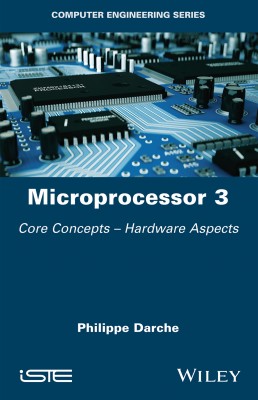
Since its commercialization in 1971, the microprocessor, a modern and integrated form of the central processing unit, has continuously broken records in terms of its integrated functions, computing power, low costs and energy saving status. Today, it is present in almost all electronic devices. Sound knowledge of its internal mechanisms and programming is essential for electronics and computer engineers to understand and master computer operations and advanced programming concepts.
This book in five volumes focuses more particularly on the first two generations of microprocessors, those that handle 4- and 8-bit integers. Microprocessor 3 – the third of five volumes – is dedicated to the microprocessor’s material aspects. The book begins by introducing basic and historical definitions of concepts related to the field. It then details the microprocessor’s external interface, then its internal constitution. This is followed by a presentation of the microprocessor’s various industrial improvements, as well as some specific families, such as the digital signal processor and the microcontroller. The volume ends with a datasheet displaying characteristics and descriptions of the microprocessor. A comprehensive approach is used, with examples drawn from current and past technologies that illustrate theoretical concepts, making them accessible.
1. Basic and Historical Definitions.
2. Microprocessor Interfacing.
3. Internal Constitution.
4. Commercial Microprocessors: From a Single Bit to 128 Bits.
5. Special Cases.
6. Datasheet.
Philippe Darche is Maître de conférences in Information Technology at the Institut Universitaire de Technologie (IUT) de Paris and a researcher at LIP6 at Sorbonne University in the Inria DeLyS (DistributEd aLgorithms and sYstemS) team, France. He is the author of five books in the field of computer architecture.